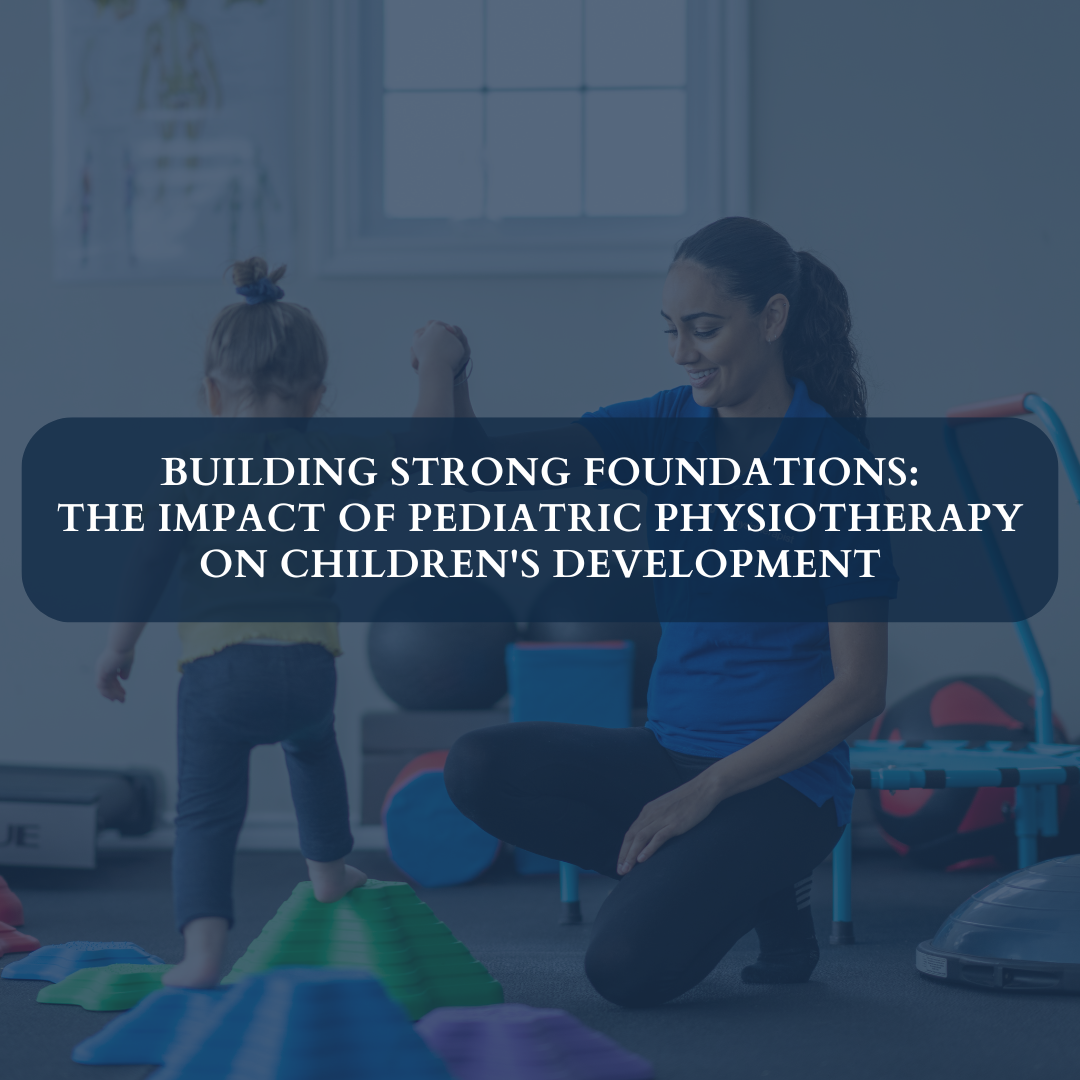Pediatric rehabilitation focuses on improving the physical, sensory, and cognitive abilities of children who have experienced injuries, developmental disorders, or medical conditions. Sensory training plays a crucial role in this process, helping children develop and refine their sensory processing skills, which are essential for their overall development and daily functioning. Physiotherapy, with its various techniques and approaches, significantly contributes to enhancing sensory training for pediatric rehabilitation. This article explores the role of physiotherapy in sensory training, its benefits, techniques, and its impact on pediatric rehabilitation.
Understanding Sensory Training in Pediatric Rehabilitation
1. Sensory Processing:
- Definition: Sensory processing refers to the way the brain interprets and responds to sensory stimuli from the environment, such as touch, sight, sound, taste, and smell.
- Importance: Effective sensory processing is crucial for motor coordination, balance, and overall development. Children with sensory processing disorders may struggle with activities requiring fine and gross motor skills.
2. Sensory Training:
- Purpose: Sensory training aims to enhance a child’s ability to process and respond to sensory input. It helps improve their sensory integration, motor skills, and functional abilities.
- Methods: This can include activities that stimulate the senses, promote body awareness, and enhance coordination.
The Role of Physiotherapy in Sensory Training
1. Assessment and Diagnosis:
- Initial Evaluation: Physiotherapists conduct comprehensive assessments to identify sensory processing difficulties and their impact on motor skills and daily activities. This includes evaluating sensory responses, motor coordination, and functional abilities.
- Customized Plans: Based on the assessment, physiotherapists develop individualized sensory training programs tailored to the child’s specific needs and developmental goals.
2. Enhancing Motor Skills:
- Fine Motor Skills: Physiotherapists use activities that require precise hand movements, such as grasping, pinching, and manipulating objects, to improve fine motor skills and sensory integration.
- Gross Motor Skills: Activities like climbing, jumping, and balancing help enhance gross motor skills and sensory processing. These activities improve body awareness, coordination, and spatial orientation.
3. Improving Balance and Coordination:
- Balance Training: Physiotherapists design exercises that challenge a child’s balance and coordination. This can include activities on balance boards, stability balls, and uneven surfaces to improve postural control and spatial awareness.
- Coordination Exercises: Activities that involve hand-eye coordination, such as catching and throwing, help improve motor planning and sensory integration.
4. Sensory Stimulation and Integration:
- Multisensory Activities: Physiotherapists incorporate activities that engage multiple senses simultaneously. For example, using textured materials, musical instruments, and visual stimuli can enhance sensory integration.
- Sensory Play: Play-based therapies, such as sand play, water play, and tactile exploration, are used to stimulate sensory processing and promote positive sensory experiences.
5. Strengthening Body Awareness:
- Proprioceptive Input: Physiotherapy includes activities that provide proprioceptive feedback, such as resistance exercises and heavy work tasks. This helps children develop a better sense of body position and movement.
- Spatial Awareness: Exercises that require children to navigate through space, such as obstacle courses, improve their understanding of body position and movement in relation to their environment.
6. Supporting Functional Skills:
- Daily Activities: Physiotherapists work on integrating sensory training with functional activities, such as dressing, eating, and writing. This helps children apply sensory skills to real-life tasks and improve their independence.
- Adaptive Techniques: Physiotherapists may recommend adaptive tools or modifications to support sensory processing and enhance participation in daily activities.
Benefits of Physiotherapy in Sensory Training
1. Improved Sensory Processing:
- Enhanced Integration: Physiotherapy helps children better integrate and respond to sensory input, leading to improved sensory processing and overall functioning.
- Reduced Sensory Sensitivity: Through desensitization techniques and gradual exposure, children can become less sensitive to certain sensory stimuli.
2. Enhanced Motor Skills:
- Increased Coordination: Physiotherapy improves both fine and gross motor coordination, allowing children to perform daily tasks more effectively.
- Better Balance: Enhanced balance and stability contribute to improved motor skills and overall physical performance.
3. Greater Functional Independence:
- Daily Living Skills: Improved sensory processing and motor skills lead to greater independence in activities of daily living, such as dressing, feeding, and grooming.
- School Performance: Better sensory integration and motor coordination positively impact academic performance and participation in school activities.
4. Boosted Confidence and Self-Esteem:
- Skill Development: As children achieve milestones and improve their sensory and motor skills, they gain confidence in their abilities.
- Social Interaction: Improved sensory processing and motor skills enhance social interactions and participation in group activities.
5. Reduced Behavioral Issues:
- Behavioral Management: Addressing sensory processing difficulties through physiotherapy can help reduce challenging behaviors associated with sensory overload or frustration.
Techniques and Approaches in Physiotherapy for Sensory Training
1. Sensory Integration Therapy:
- Focus: This approach involves structured activities that provide sensory input in a controlled environment, helping children process and integrate sensory information more effectively.
2. Therapeutic Play:
- Play-Based Therapy: Engaging children in playful activities that target sensory and motor skills, making therapy enjoyable and effective.
3. Occupational Therapy Integration:
- Collaborative Approach: Physiotherapists often work closely with occupational therapists to provide a comprehensive sensory training program that addresses both sensory and functional needs.
4. Family Involvement:
- Education and Support: Physiotherapists educate families on sensory processing and provide strategies to support sensory integration at home. This ensures consistency and reinforces therapy goals.
Conclusion
Physiotherapy plays a vital role in enhancing sensory training for pediatric rehabilitation, addressing sensory processing difficulties, and improving motor skills and functional abilities. Through a range of techniques and approaches, including sensory integration, motor skill development, and therapeutic play, physiotherapists help children build essential skills and achieve their developmental goals. By working closely with families and integrating therapy into daily activities, physiotherapy supports children in reaching their full potential and leading more independent, fulfilling lives.





